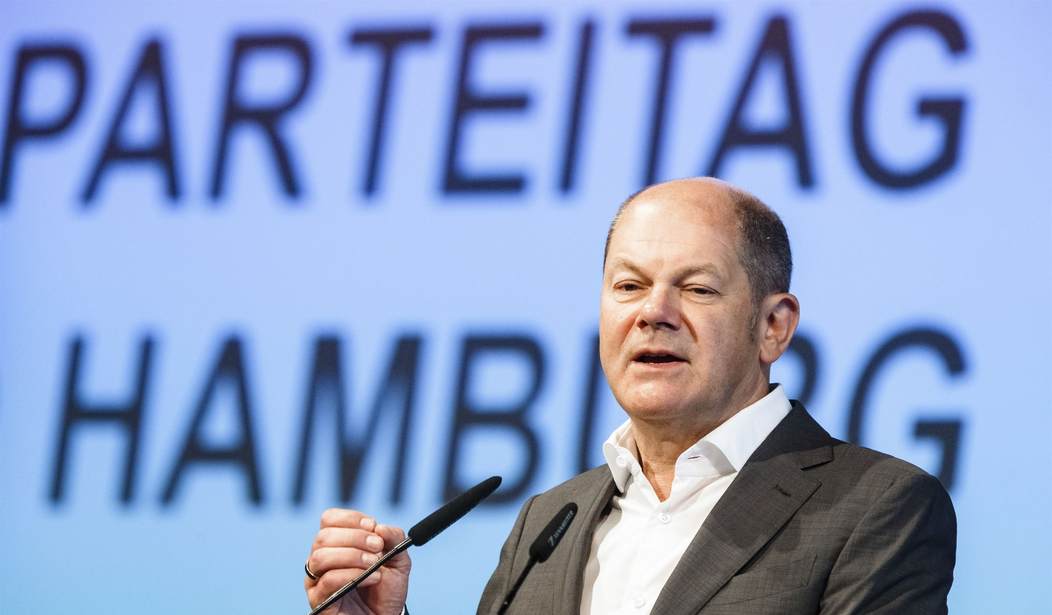Shortly after Russia invaded Ukraine and all of the NATO allies rushed to begin helping Zelensky, it was once again pointed out that some European Union countries still weren’t spending very much on their defense budgets. German Chancellor Olaf Scholz stepped up and boldly declared that there would be a Zeitenwende (sea change) in his nation’s approach to defense spending. He promised to increase those spending levels to 2% of Germany’s economic output, as his nation had previously been asked to do during the Trump administration. That sounded great (or at least better) at the time, but today he reversed course. His spokesperson said that they weren’t going to make it to two percent this year and it’s unlikely they will meet that goal next year either. But it’s “possible” they might manage it in 2025. (Politico)
Germany on Monday walked back its promise to swiftly raise defense spending to at least 2 percent of its economic output — breaching the key commitment made days after Russia’s invasion of Ukraine to become a more serious military force.
Berlin also sought to play down internal warnings about delays to a flagship procurement of new fighter jets.
During a government press conference, Chief Spokesperson Steffen Hebestreit scaled down expectations for Germany’s defense spending, telling journalists that the 2 percent target would be missed not only this year, but also likely next year: “It’s still open whether that [goal] will be achieved” in 2023, Hebestreit said, adding that his “cautious expectation” was that Germany would still meet the target within this legislative period, which ends in 2025.
This news came out shortly after Germany admitted that it is running out of ammunition after the Defense Minister failed to budget for more of it this year. The Germans had also committed to purchasing 35 of our F-35 fighter jets to modernize and expand their air power. That purchase is now also on hold.
The Germans are trying to blame these delays on “lengthy procurement processes” and supply shortfalls. But in reality, we’ve seen all of this play out before. It’s always been assumed in Europe that they could hang on to their cash and let the United States take care of their defensive needs. This was an attitude that we unfortunately accepted or even encouraged at times.
Those patterns need to change because the world is changing substantially. It is now obvious that Russia isn’t just fighting against Ukraine. They are realigning with some other bad state actors around the globe and the NATO alliance will likely continue to see new challenges. This could include the possibility of additional military engagements in various hotspots. The United States has enough trouble on its own plate at the moment and our economy isn’t exactly in great shape. Others will need to step up and help to pay their share of the defensive burden.
The same thing applies to the entire EU. In September, Thierry Breton, the EU defense commissioner, admitted that they all need to be spending more.
“We all realize that we need to spend more, but we need to spend better,” said Thierry Breton, the EU commissioner in charge of defense industries and space.
Alas, for now, the main European powers aren’t moving in that direction. On the contrary, each seems to be going its own way, with many choosing to buy arms off-the-shelf from dominant United States arms manufacturers, rather than building up a common European defense industry.
This is the same thing we always hear. Everyone knows there is a problem but they can’t seem to muster the resolve to address it. Nobody wants to see Europe fall to the Russians, the Chinese, or anyone else. But they can’t simply assume that America will foot the bill for all of this. We have to make plenty of sacrifices to maintain our massive military. The Europeans are going to need to figure out where they can cut some costs so they cand be better partners in defense.









Join the conversation as a VIP Member